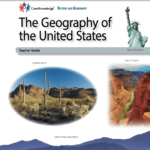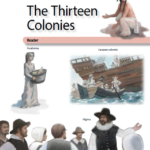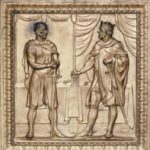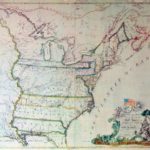Magna Carta was sealed on a field in England in 1215. Its purpose was to appease some frustrated barons, and it was never intended to last. Over 800 years later, this document is credited with establishing one of the most foundational principles of our democracy. So what does Magna Carta actually say? And how did it get from dubious stalling tactic in the 13th century to Supreme Court arguments in the modern era?
In this episode, you’ll learn how Magna Carta survived and thrived its way into our democracy.
This short episode includes a one-page Graphic Organizer for students to take notes on while listening, as well as discussion questions on the back side.
Comparing the Magna Carta and English Bill of Rights with the U.S. Bill of Rights
In this activity students will examine the influences of the Magna Carta and the English Bill of Rights on the Bill of Rights in the U.S. Constitution. By the end of the activity students should be able to cite clear examples of the influence of English legal traditions in the U.S. Bill of Rights; they should also be able to give examples of how the American document is unique in offering even further expanded rights.
The Geography of the United States (CKHG Unit)

This unit reinforces map and globe skills as students learn about the geographic characteristics of different regions of the United States: New England, Mid-Atlantic, South, Midwest, Great Plains, Rocky Mountain, Southwest, and West Coast. Across 13 lessons, students explore the climate, natural resources, culture, and other distinctive characteristics of each region.
The Thirteen Colonies (CKHG Unit)

This unit explores the development of three regions of English colonies using primary source documents and imaginative narratives. Across 35 lessons, students explore Jamestown, labor by indentured servants, and the reliance on enslaved workers in the southern colonies, look at the motives influencing the Pilgrims and Puritans in New England and the financial and religious reasons for settling the Middle Colonies.
Magna Carta: Justification for American Independence
Explore how the principles of Magna Carta inspired American colonists to declare their independence from England in this video from the ABOTA Foundation and PBS Learning Media. Includes video, background essay and teaching guide!
Magna Carta: Cornerstone of the U.S. Constitution

Magna Carta served to lay the foundation for later declarations of rights in England and the United States. In attempting to establish checks on the king’s powers, this document asserted the right of “due process” of law. It also provided the basis for an idea of a “higher law,” one that could not be altered either by executive mandate or legislative acts. This concept, embraced by the leaders of the American Revolution, is embedded in the supremacy clause of the United States Constitution.
States, Slavery, and the Constitution

This short video assesses sectional differences at the Convention about slavery. New England delegates saw slavery as a moral issue beyond the scope of their deliberations; representatives from the Middle States were generally opposed to slavery on moral and economic grounds; and Southerners were insistent on protection for both slavery and the slave trade. Professor John Kaminski analyzes how the conflict was resolved by denying Congress any power to regulate the trade until 1808.